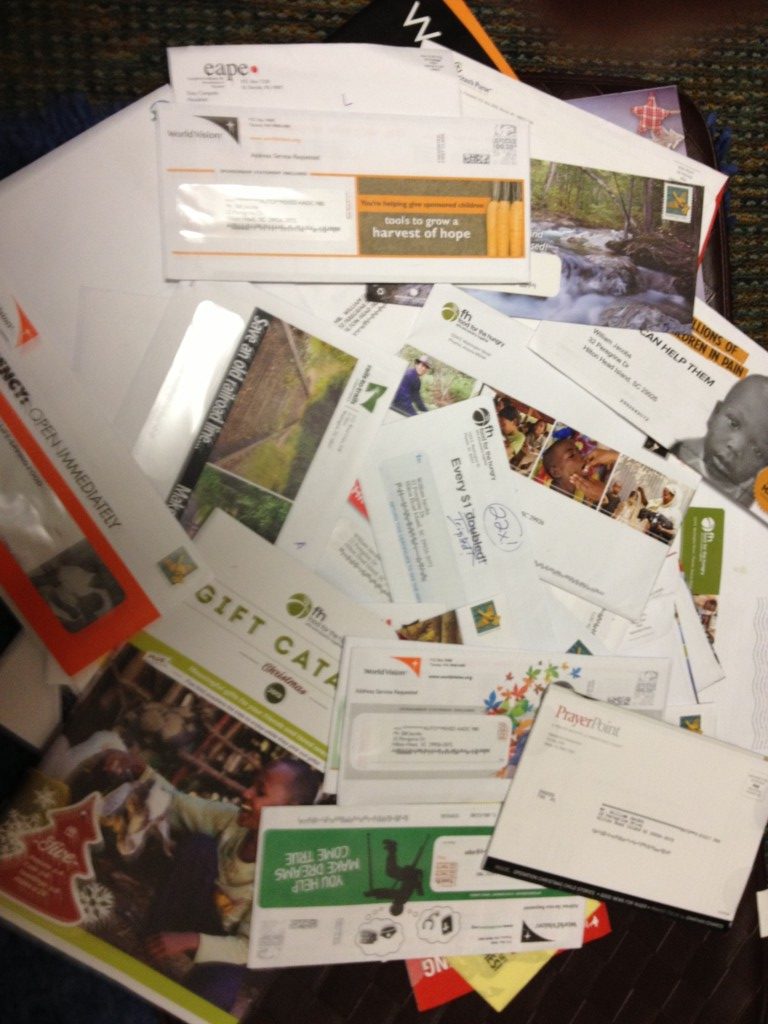
How full was your mailbox this fall?
I received an even 51 impacts this fall from October 1 – December 31. That’s an average of 4 pieces per week.
Eight (8) of these impacts were direct mail acquisition kits:
- Three (3) gift catalogs from Heifer
- Two (2) appeals from Low Country Food Bank
- One (1) each from:
o Rails to Trails
o Southern Hope Humane Society
o ACLJ
I received 43 impacts from ten (10) organizations I currently or have previously supported.
Of these, 6 were gift catalogs:
- Three (3) from World Vision
- One (1) each from:
o Food for the Hungry
o India Partners
o Samaritan’s Purse
And two (2) were annual reports (World Vision and Food for the Hungry).
The remaining 35 impacts were appeals and newsletters (it’s hard to tell them apart anymore):
- Seven (7) from Samaritan’s Purse
- Six (6) from The Salvation Army
- Five each (5) from World Vision and Food for the Hungry
- Four each (4) from Appalachian Trail Conservancy and the Evangelical Association for the Promotion of Education
- Two (2) from CRU
- One (1) each from Hope for Life Homes and King’s Schools.
As I reported previously, since the USPS bundles delivery of nonprofit postage kits together, many of these appeals arrived on the same day of the week.
I should note, I never respond by mail anymore. Since 2009, I either go online or use bill-pay to make my donations. But I should also note, direct mail impacts do remind me to make my donations, even though I am not using the reply device or CRE.
So, what did your mailbox look like this fall?

